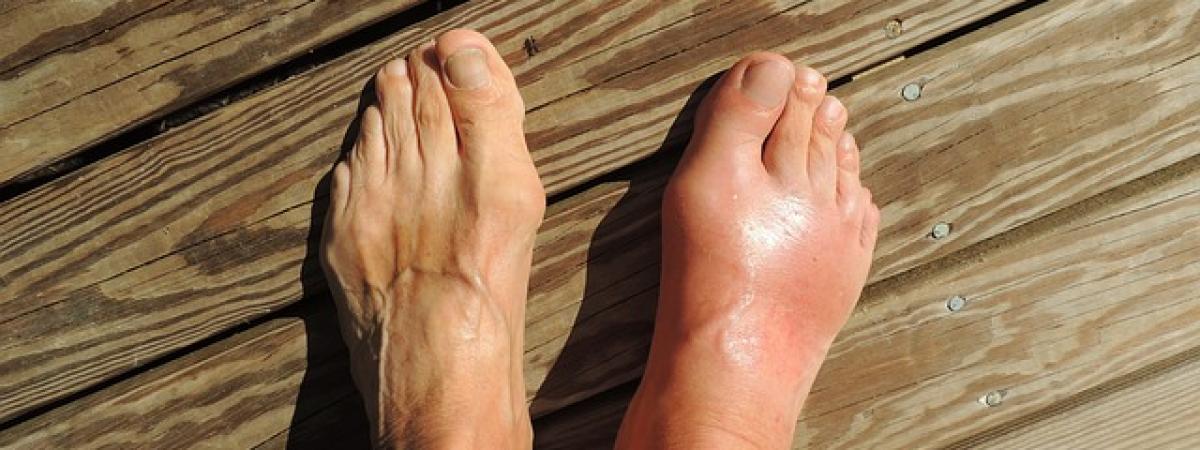7 interesting facts about gout
published in Reader's Digest,
23 May 2019

Gout is a curable form of arthritis. Joint pain, swelling, heat and redness are signs of an inflammatory response to sharp needle-like crystals, formed from uric acid—a normal component of urine made from food breakdown and aged cells—that can build up in the blood. Here are seven interesting facts about gout.
It really hurts
When you’re in the grip of gout, it can feel “as if your foot is on fire”; even the weight of bedclothes can send the pain soaring. Many gout sufferers rank their attacks as “the worst pain possible”.
It’s more common after the menopause
Gout is rare in women before the menopause since oestrogen protects against gout; during menopause, a woman’s ovaries effectively stop producing oestrogen and so the risk of gout rises. Hormone replacement therapy can help flush out uric acid.
Lifestyle changes may help
Certain foods (meat and seafood) and drinks (beer and soft drinks) can result in a five-fold risk of gout attacks according to the UK Gout Society. They advise drinking plenty of water…and that sour cherries or sour cherry juice might be good for gout.
Professor of Rheumatology Mike Doherty thinks though that specific dietary factors are less important in causing gout than obesity and genetic factors. Gradual weight loss is recommended.
Medicines may be taken incorrectly
There are two types of gout medicines: those that alleviate an acute attack, such as ibuprofen, steroids and colchicine (made from the autumn crocus) and those that lower uric acid levels long-term, preventing further flares.
The long-term medicines include allopurinol and febuxostat: prescribing allopurinol during an acute attack can actually make it worse. Equally harmful is stopping your long-term medicine because you feel better: doctors advise sticking with it to prevent possible joint damage.
Get gout, avoid Alzheimer’s?
Writing in the Lancet, Professor Nicola Dalbeth says that “gout is associated with reduced risk of neurological disorders such as Parkinson’s disease, Alzheimer’s disease, and both vascular and non-vascular dementia”. Really?
Scientists wonder whether uric acid, whilst being primarily a waste product, could also act as a powerful antioxidant protecting brain cells from damage (“treasure in the trash”?)
High uric acid levels are, however, also associated with heart disease. According to the Framingham Heart Study, people with gout are at twice the risk.
Importantly though, in medicine simply seeing an association between two diseases is very different from proving causation (read more here if you’re interested). More trials are needed before conclusions can be drawn.
It can affect any joint
In most people, the big toe is affected first. Sudden, severe pain can though also be felt in the knees, ankles and fingers. More rarely, crystals can collect in the eyes, the nose, the spine, the skin and the kidney (resulting in kidney stones).
You’re in good company
Gout has famously afflicted Ludwig van Beethoven, King Henry VIII, Charles Dickens, Sir Isaac Newton and Leonardo da Vinci. Once termed the “rich man’s disease” it is now clear that gout does not discriminate – and it affects women too. If you get gout, you are not alone. The UK Gout Society estimate that 1 in 40 people are at risk.
